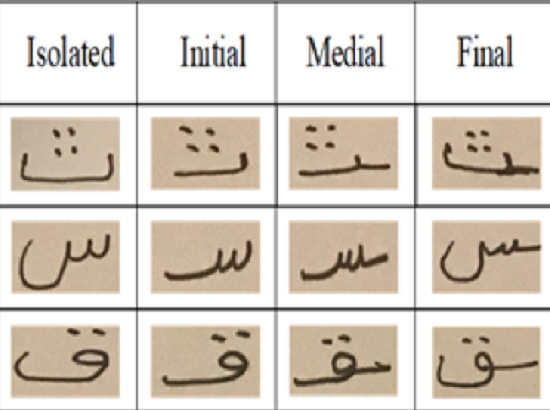


Indian Journal of Science and Technology
Year: 2020, Volume: 13, Issue: 25, Pages: 2565-2574
Original Article
Asghar Ali Chandio1,2*, Mehwish Leghari2,3, Ali Orangzeb Panhwar4, Shah Zaman Nizamani2, Mehjabeen Leghari3
1School of Engineering and Information Technology, University of New South Wales, Australia. Tel.: +92-3343138628
2Department of Information Technology Quaid-e-Awam University of Engineering, Science & Technology, Nawabshah, Pakistan
3Department of Information Technology, University of Sindh, Pakistan
4Benazir Bhutto Shaheed University, Lyari, Pakistan
*Corresponding Author
Email: [email protected]
Received Date:12 June 2020, Accepted Date:02 July 2020, Published Date:21 July 2020
Motivation : The problem of handwritten text recognition is vastly studied since last few decades. Many innovative ideas have been developed, where state-of-the-art accuracy is achieved for the English, Chinese or Indian scripts.The recent developments for the cursive scripts such as Arabic and Urdu handwritten text recognition have achieved remarkable accuracy. However, for the Sindhi script, existing systems have not shown significant results and the problem is still an open challenge. Several challenges such as variations in writing styles, joined text, ligature overlapping, and others associated to the handwritten Sindhi text make the problem more complex. Objectives: In this study, a deep residual network with shortcut connections and summation fusion method using convolutional neural network (CNN) is proposed for automatic feature extraction and classification of handwritten Sindhi characters. Method: To increase the powerful feature representation ability of the network, the features of the convolutional layers in the residual block are fused together and combined with the output of the previous residual block. The proposed network is trained on a custom developed handwritten Sindhi character dataset. To tackle the problem of small data, a data augmentation with rotation, flipping and image enhancement techniques have been used. Findings: The experimental results show that the proposed model outperforms than the best results previously published for the handwritten Sindhi character recognition. Novelty: This is the first research that proposes deep residual network with summation fusion for the Sindhi handwritten text recognition.
Keywords: Handwritten Sindhi character recognition; Sindhi text recognition; cursive text recognition; deep learning; ResNet; convolutional neural network
© 2020 Chandio, Leghari, Orangzeb Panhwar, Zaman Nizamani, Leghari.This is an open-access article distributed under the terms of the Creative Commons Attribution License, which permits unrestricted use, distribution, and reproduction in any medium, provided the original author and source are credited. Published By Indian Society for Education and Environment (iSee)
Subscribe now for latest articles and news.